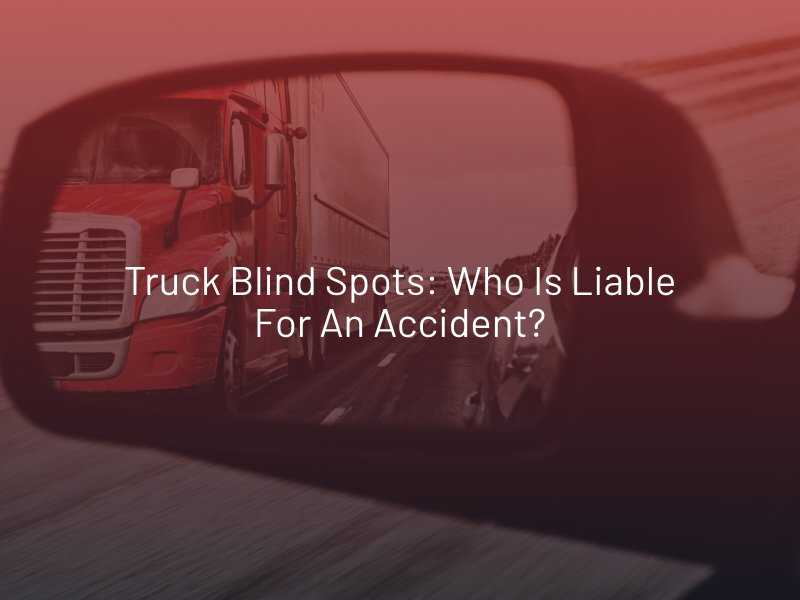Truck Blind Spots: Who Is Liable For An Accident?
Commercial trucks have considerably large blind spots that limit a truck driver’s visibility, making it dangerous for motorists who travel in these “no-zones.” Drivers should exercise caution and try to avoid a truck’s blind spots. Still, commercial drivers are required to operate their vehicles safely, drive predictably and use turn signals well in advance of making a maneuver. When a blind spot accident does occur, it can be challenging to determine who is liable.

Who Could Be Liable for a Blind Spot Truck Accident?
After a blind spot accident, multiple parties are often liable. Ultimately, it is the truck driver’s responsibility to check their blind spots and take extra care before making a maneuver. If their failure to do so caused the accident, the truck driver will be responsible for the resulting damages. The trucking company that employs the trucker may also be vicariously liable if the driver is an employee and was working at the time the collision occurred.
The trucking company or owner of the truck can also be partially liable if their negligence contributed to the crash, even if the truck driver is not an employee. For example, by failing to provide the driver with adequate training, hiring an unlicensed driver, failing to maintain the vehicle, etc. Lastly, if other third parties were involved or contributed to the accident, such as another driver or the manufacturer of a defective part, they can also be liable. However, the at-fault parties may blame the passenger vehicle driver for remaining in the truck’s blind spot. They may argue that if the car’s driver sped up or slowed down, the accident would not have happened. Determining which party is liable will take a thorough investigation and solid evidence. Choosing to hire an experienced Las Vegas trucking accident attorney can help you fight for your right to compensation.
How to Prove Liability
To prove another party is liable for a blind spot truck accident will require demonstrating negligence. That involves providing evidence of the following four elements:
Duty of Care
The defendant (at-fault party) owed the plaintiff (victim) a duty of care. (e.g., a truck driver must follow traffic laws and take extra caution when changing lanes, making a turn, or performing any other maneuver)
Breach of Duty
The defendant breached that duty. (e.g., the truck driver failed to check their blind spots before changing lanes)
Causation
The defendant’s violation of care was the direct cause of the plaintiff’s injury. (In other words, the accident and the plaintiff’s injuries would not have occurred if the truck driver had checked their blind spots before changing lanes)
Damages
The plaintiff suffered damages as a result of the defendant’s breach of care. (e.g., medical expenses, lost wages, pain and suffering, etc.)
Where Are the Blind Spots on a Large Truck?
Semi-trucks have four primary blind spots that are also referred to as “no-zones”:
- Immediately in front of the truck’s cab, extending forward for about 20 feet.
- Just behind the driver’s window extending towards the back of the truck.
- The right side of the truck’s cab extending towards the back and diagonally.
- About 30 feet directly behind the truck’s trailer.
These areas are called no-zones because it is nearly impossible for truck drivers to see a vehicle in these areas.